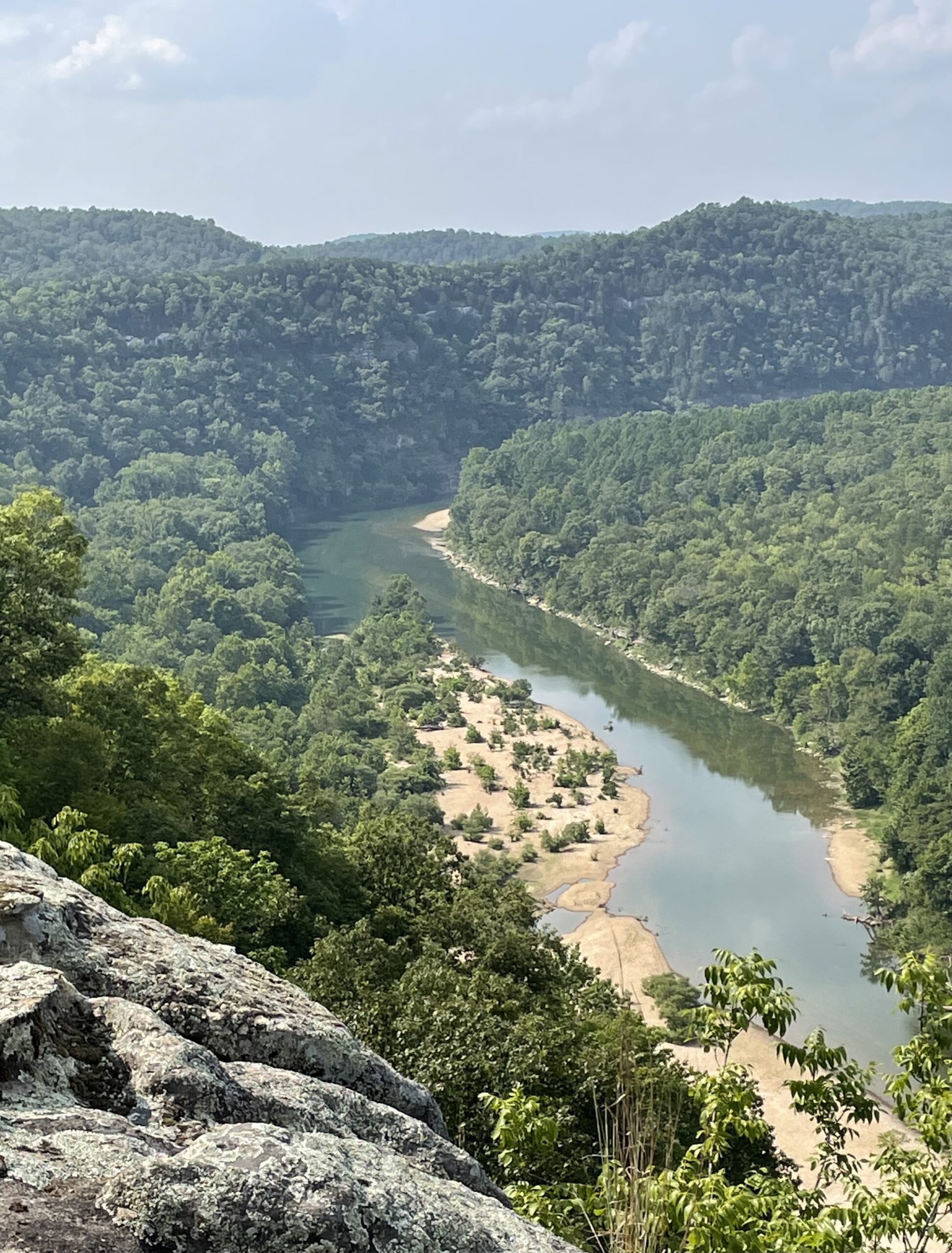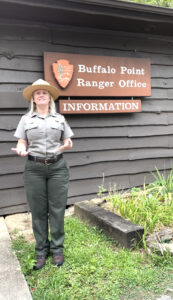Places We've Shaped
Buffalo River Ranger Interview


On a recent trip through Arkansas, we were fortunate enough to enjoy a stopover at Buffalo National River, a new addition to the Center’s Gold Standard Sites. The Buffalo National River region has been inhabited since the Archaic period and is the ancestral home of the Osage, Cherokee, and Shawnee peoples. During our stay, we spoke with Park Ranger Cassie Branstetter about the area and how Leave No Trace was being implemented to help reduce visitor impacts.

Q: What visitor impacts is the Buffalo National River seeing more of recently?
Branstetter: “In the past two years we have seen a huge increase in visitation to the park. This leads to amazing experiences for visitors, but does also lead to impacts on the resources of the park. Impacts seen from the increased visitation include extra compaction to the trails system of the park, trash in parking lots, river corridors and along trails; as well as social trails being created in hiking areas when too large of a group tries to hike through a corridor.”
With the increase in outdoor recreation seen during the pandemic, we have more people interested in recreating out of doors than we’ve seen in the past few years. More people recreating outside means more potential impacts but it also means more potential stewards for the outdoor spaces we love to enjoy.
Q: How does the Leave No Trace program help minimize these impacts?
Branstetter: “We utilize Leave No Trace principles in Buffalo National River to educate visitors on how they can have an amazing experience on public lands while having a limited impact on the resources themselves. The key idea of taking only pictures and leaving only footprints really helps to keep public land available for the next 1.5 million visitors next year because that’s certainly how many we had in 2020!”
Leave No Trace seeks to reduce impacts from unskilled or uninformed visitors by providing the knowledge, skills, and abilities necessary to reduce or eliminate impacts while inspiring people visiting our public lands to utilize land stewardship practices to preserve the beauty for the next visitors to the area.
Q: The Buffalo National River was awarded the status of being a Gold Standard Site by Leave No Trace last year, in 2020. How much work went into the process of being a Gold Standard Site.
Branstetter: “The process to become a Gold Standard Site for the Leave No Trace organization was one that took a few years at Buffalo National River. We focused on education programs for visitors to make them aware of the core principles that protect the public lands. We educated visitors through a combination of videos, social media content, as well as pamphlets and handouts to spread the knowledge as far as possible so that everyone’s visit could not only be enjoyable and a one-of-a-kind unique experience but also something that could protect the public land around them.”
At the time of its designation as a Gold Standard Site, Buffalo National River attained a high score of 39 out of 40 possible points on the site analysis. This was achieved by a comprehensive and multi-pronged approach. Just a few examples of the steps being taken include providing public Trainer Courses, equipping campground hosts with Authority of the Resource skills, and incorporating Leave No Trace activities in their Junior Ranger booklet.
Q: Of the Seven Principles, which one would you like to remind people to consider while visiting Buffalo National River?
Branstetter: “One of the most important Leave No Trace principles for Buffalo National River is the first one: Plan Ahead and Prepare. There are so many stories that I’ve heard of people coming for a fun weekend in the park and they leave disappointed because they didn’t plan ahead and prepare. They weren’t aware of how long the section of river was and it took much longer than they were prepared for, or perhaps they didn’t have water or sunscreen and came away burnt to a crisp from their time on the river. It’s so important to think about that number one principle from Leave No Trace, Plan Ahead and Prepare, not only to have a good impact on the park and the resources here but to just have a good impact on your experience. If you want to have fun make sure you have all the tools to have a good, safe time.”
Gold Standard Sites are a way the center can recognize the strongest examples of federal, state, and locally managed lands utilizing Leave No Trace in their visitor education. These sites can serve as a blueprint for areas attempting to institute effective Leave No Trace training for protected areas managers and other relevant parties. The program aims to achieve a critical mass of Gold Standard designated sites across the country to ensure minimum-impact education is part of every public lands visitor experience.
By the Subaru/Leave No Trace Teams. For over 20 years these teams have provided tangible solutions to serious issues facing our outside space and reach over 15 million people every year. Learn more about the important work of our mobile education teams. Proud partners of this program include Subaru of America,REI,Eagles Nest Outfitters, Thule,Fjällräven andKlean Kanteen.
Let’s protect and enjoy our natural world together
Get the latest in Leave No Trace eNews in your inbox so you can stay informed and involved.
